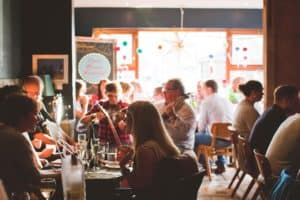Myths in Manuscripts: Exploring Irish Myth Through Literary Texts
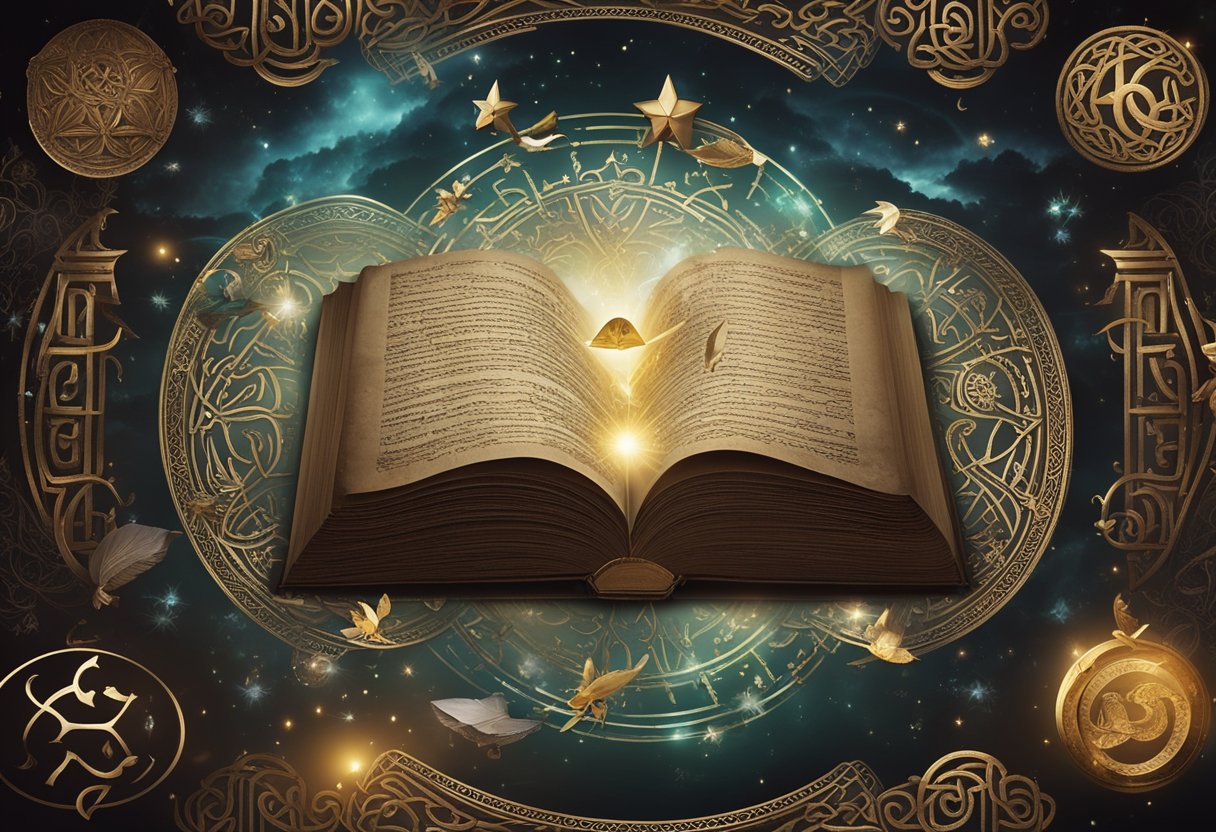
Updated On: April 24, 2024 by Maha Yassin
Irish literature is a vessel through which the rich tapestry of Celtic mythology and Irish myth has been preserved and conveyed across the centuries. From the earliest sagas inscribed in medieval manuscripts to the oral traditions of the seanchaí, these stories form an integral part of Ireland’s cultural heritage. Delving into these ancient narratives, we uncover a world where mythical beings tread the same ground as mortals and legendary heroes perform feats that resonate through time.
The interweaving of pagan lore with Christian elements in Irish literature offers a unique glimpse into the cultural synthesis that characterises Ireland’s historical narrative. The landscapes of Ireland serve not only as backdrops for these epic tales but also as sacred spaces imbued with their mythical significance. This intertwining of the supernatural with the natural world highlights the Irish tradition of storytelling wherein every place has a tale, and every tale is steeped in the distinctive elements of Irish culture.
The Roots of Irish Literature
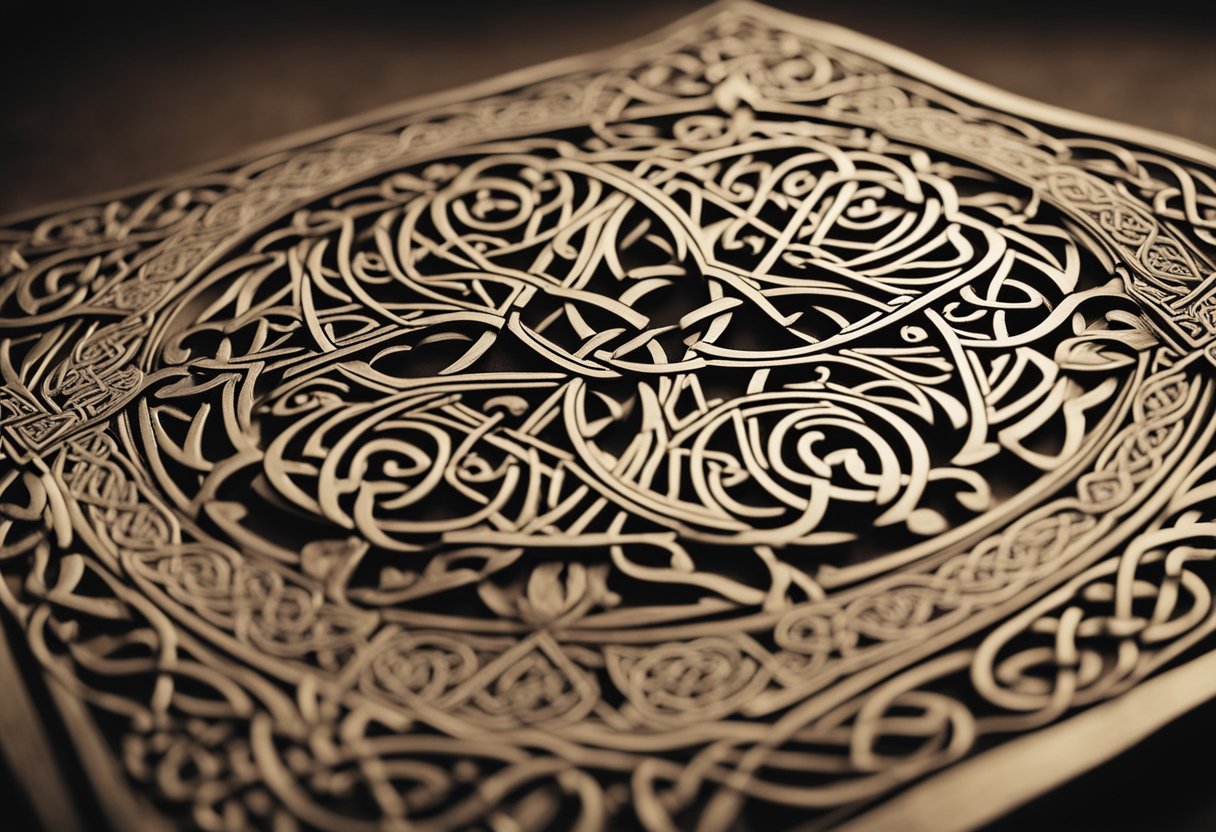
The dawn of Irish literature is marked by a unique system called Ogam. Ogam inscriptions, dating from the fourth and fifth centuries, are the first instances of written Irish. These consist of twenty symbols of strokes and dots inscribed primarily on stone slabs and pillar stones, although they’ve also been found on materials like bone and wood.
Within Ireland, a storied tradition of legends has been passed down through the generations, enriching our cultural fabric. The Irish oral tradition was crucial in preserving these stories before they were captured in writing. This heritage of storytelling is a cornerstone of Irish literary history, breathing life into tales of heroes, fantastical creatures, and the complex pantheon of Celtic deities long before they were chronicled on parchment.
Historically, Ireland’s literary tradition extends far beyond mere entertainment. It’s interwoven with our history, capturing the essence of our ancestors’ values, norms, and the very worldview they held. The nexus of folklore and history can be witnessed explicitly through manuscripts like the Lebor Gabála Érenn or ‘Book of Invasions’, which attempts to chronicle the heritage and genealogy of the Irish.
As we explore these ancient texts, we are not merely reading words but retracing the footsteps of people who held their myths close to their hearts. The stories within these pages have been meticulously woven through the threads of Ireland’s national identity. They affirm the profound connection between the Irish people and their storied past, highlighting a lineage of lore that continues to influence literature here and worldwide.
Fundamentals of Irish Mythology
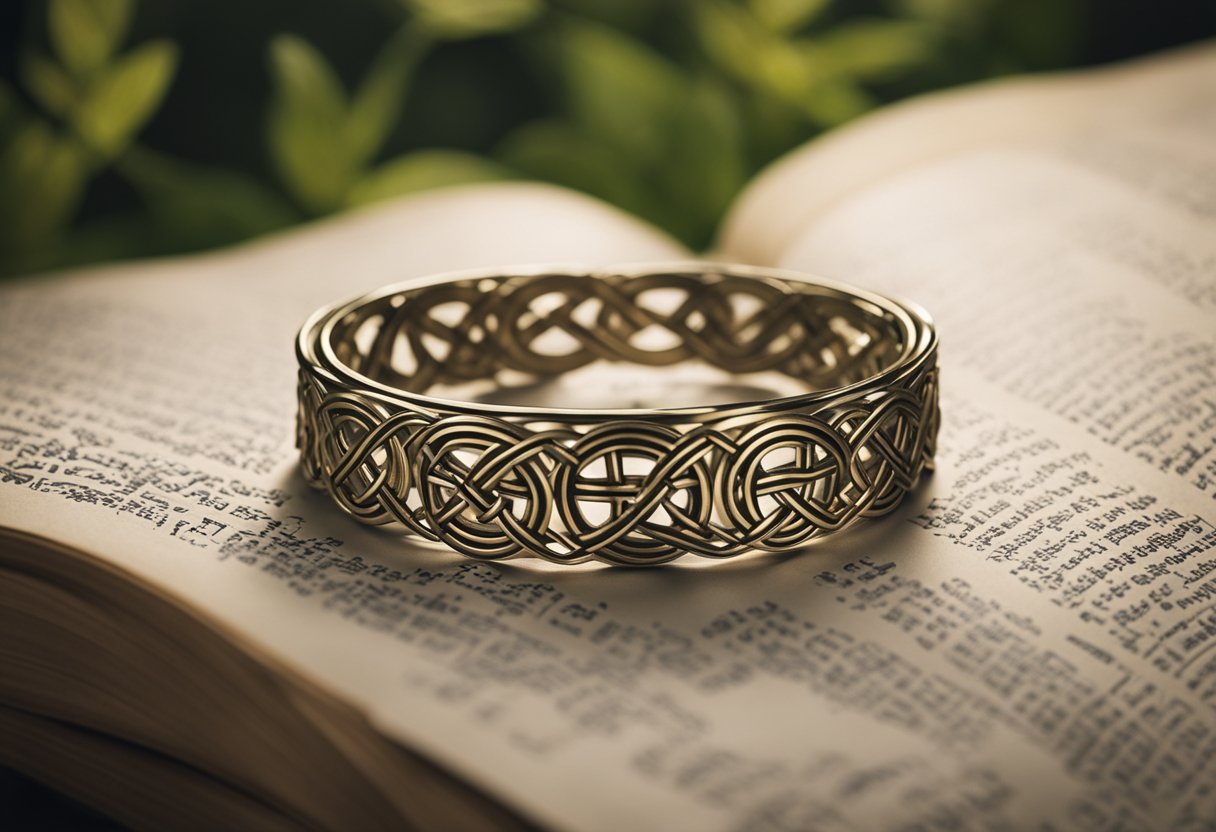
With its rich tapestry of narratives and characters, Irish mythology forms an integral part of our cultural heritage. Rooted deeply in pre-Christian and Celtic beliefs, these myths give us a glimpse into the intersection of nature, culture, and the spiritual world of the Celts.
Celtic Mythology and Pagan Deities
The mythology of Ireland is composed predominantly of tales from the pagan Celts, a civilisation with a pantheon of deities connected closely to natural elements and phenomena. These pagan deities include figures like the Dagda, known for his control over life and death, and Brigid, the goddess associated with spring, fertility, and healing.
Four Cycles of Mythology
Irish myth can be categorised into four main cycles:
- Mythological Cycle: Tales of ancient gods and creation myths.
- Ulster Cycle: Centred around heroes like Cú Chulainn.
- Fenian Cycle: Focuses on Fionn mac Cumhaill and the Fianna.
- Historical Cycle: Interweaves legendary narratives with semi-historical accounts.
These cycles encapsulate various stories, from epic sagas to subdued folklore, reinforcing the thematic elements of heroism, morality, and the interplay between the mortal and the divine realms.
The Influence of Nature
Nature plays a pivotal role in Irish myth. Many myths incorporate natural landscapes, such as the Hill of Tara or the Giant’s Causeway, infusing them with magic and transforming them into gateways to other worlds or as emblems of ancient sovereignty and mysticism.
In exploring Irish mythology, we observe how these tales reflect a society’s values, struggles, and artistic expressions intrinsically tied to its environment and past. Through our study, we gain a profound understanding of the collective consciousness that has shaped Irish culture across millennia.
Legendary Characters and Heroes
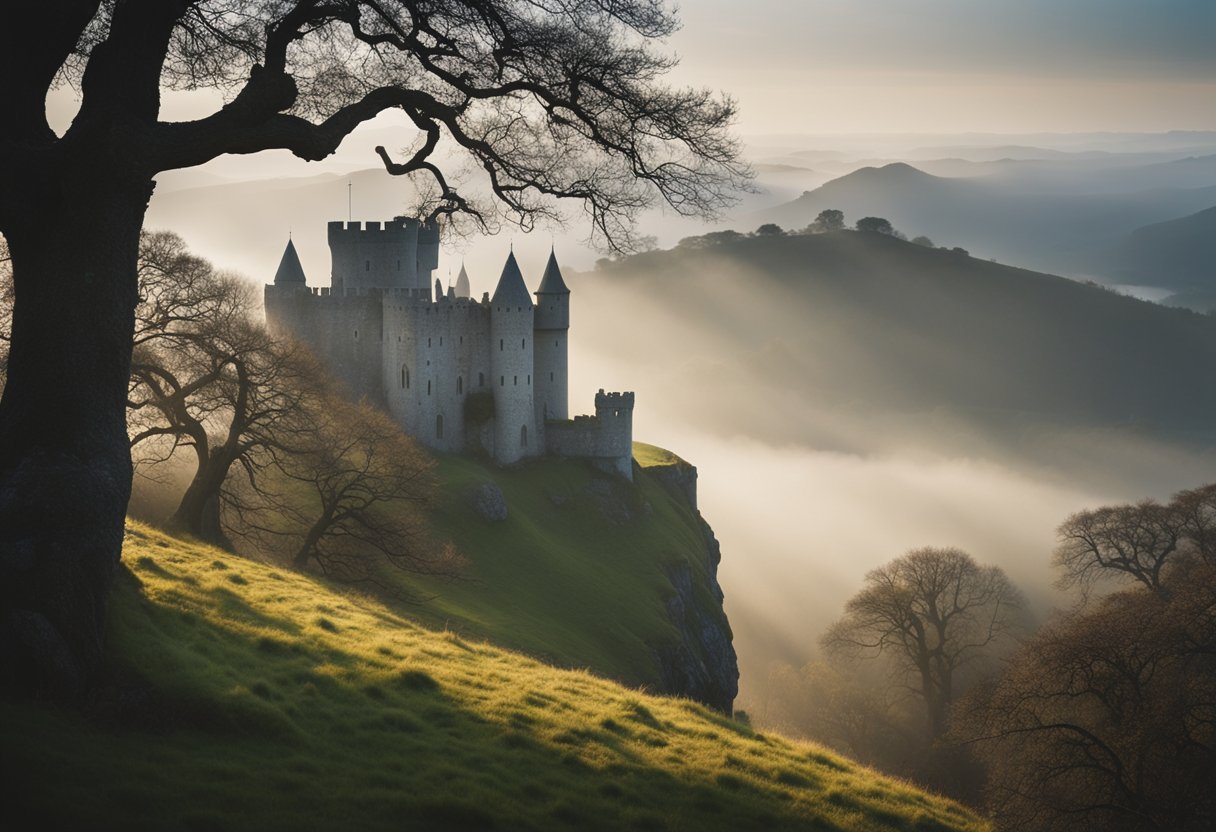
Irish mythology brims with extraordinary characters and heroes, each embodying ancient Ireland’s values, fears, and aspirations. We find the narratives of these legendary figures woven intricately into the manuscripts that have survived our days.
One of the most famed heroes of Irish legend is Cú Chulainn, renowned for his superhuman abilities and heroic deeds. His story is a central part of the Ulster Cycle, one of the four main cycles of traditional Irish mythology. We see him transitioning from the boy Sétanta to the warrior Cú Chulainn after single-handedly defending Ulster against Queen Medb’s forces. His tale highlights themes of honour, loyalty, and destiny.
Fionn mac Cumhaill is another iconic figure, best known as the leader of the Fianna. Stories describe him as a warrior, hunter, and sage. He gains wisdom from the Salmon of Knowledge, which sets him apart as a leader and hero.
The Children of Lir offers a poignant story of transformation and endurance. After being turned into swans by their jealous stepmother, the siblings spend 900 years in this form before returning to their human shapes, illustrating themes of family and resilience.
Manannán mac Lir, a sea deity, and Lugh, a master of skills and a warrior of the Tuatha Dé Danann, bring a touch of the divine to human struggles. Their influence over the sea and crafts, respectively, reflects the ancient Irish respect for both the natural world and artisan skills.
The goddess Brigid, associated with the spring season, fertility, healing, and poetry, transcends folklore to become an integral part of pagan and Christian traditions in Ireland.
Within these characters, we find the essence of Irish lore: mortal and immortal heroes who have left an indelible mark on Ireland’s cultural landscape. Their stories continue to enchant us, offering a window into the world of our ancestors, where every lake, hill, and stone has a tale to tell.
The Synthesis of Christianity and Pagan Lore
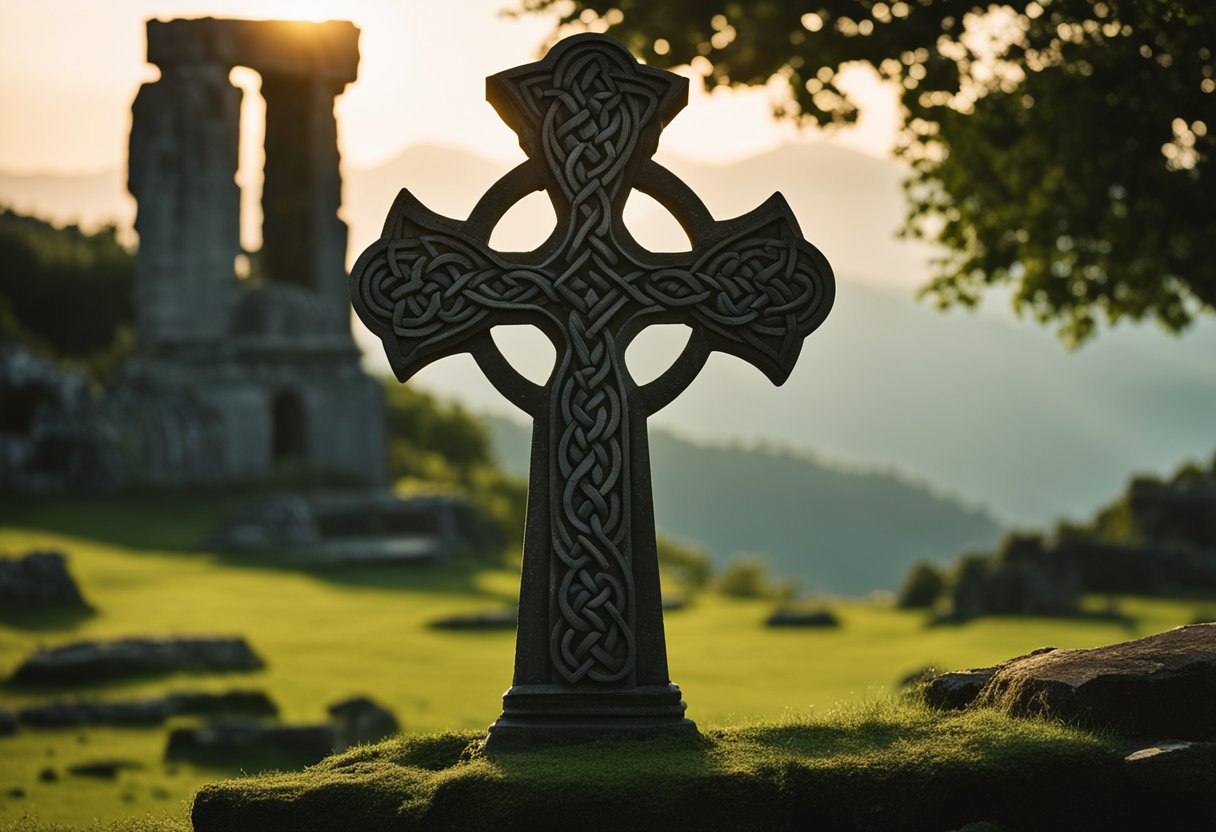
In the rich tapestry of Irish literature, the interlacing of Christianity and Pagan lore is a complex and illuminating aspect of our cultural identity. Ireland’s past, with myths and spiritual narratives, reveals a significant transformation as the early Christian missionaries integrated indigenous beliefs with new religious teachings.
The Otherworld, a central element in Irish folklore, was seamlessly woven into Christian spirituality. This amalgamation echoed in manuscripts, where tales of saintly miracles and ethereal beings coexist. Monastic scribes, entrusted with these texts played a pivotal role in preserving the nation’s lore whilst infusing it with Christian ethos.
- Monks and Manuscripts:
- Promulgated Christian doctrine
- Preserved indigenous myths
- Fostered a synthesis of traditions
By embracing elements of the native spirituality, Christianity anchored itself more deeply within the Irish psyche. Our early Christian ancestors, rather than erasing the old traditions, often embraced and reinterpreted them, endowing previously pagan symbols with a new Christian significance. This strategy eased the transition to the new religion and enriched the religious experience with a distinctly Irish flavour.
An example of this cultural blend is the figure of Saint Brigid, whose narrative bears striking similarities to the Pagan goddess Brigid. She embodies the synthesis of traditions as a spiritual bridge connecting pre-Christian and Christian eras.
Thus, within Irish literature, we discern the dialogues between what was and what became – a conversation that is enshrined in our past’s vellum pages.
Epic Tales and Oral Narratives

Irish literature is a rich tapestry interwoven with epic tales and oral narratives that have been passed down through generations. These stories are pivotal to understanding the cultural and mythological heritage of Ireland.
The Ulster Cycle
The Ulster Cycle is one of the four major cycles that form the bedrock of Irish mythology. It’s characterised by warrior tales and royal sagas, with the monumental epic Táin Bó Cúailnge, commonly known as The Cattle Raid of Cooley, as its centrepiece. This tale encapsulates heroism and conflict centred around the legendary figure Cú Chulainn, illuminating a tapestry woven from storytelling and poetry that has pervaded Irish identity.
The Mythological Cycle
In the Mythological Cycle, we delve into the origins and genealogy of the Irish gods and the mystical account of Lebor Gabála Érenn, the Book of Invasions. These manuscripts comprise a foundational narrative of Irish heritage, where myth blends with history, chronicling the invasions, battles, and establishment of various deities and peoples in Ireland.
The Fenian Cycle
Lastly, the Fenian Cycle, also known as the Fianna Cycle, celebrates the legendary band of warriors known as the Fianna, led by the heroic Fionn mac Cumhaill. These narratives are a collection of tales reflecting themes of love, bravery, and honour, couched in an era when chivalry was the social fabric of the ancient Gaels, and oral narrative was the medium through which these values were propagated.
Influence of Irish Folklore on the Arts
Irish folklore has woven magic into various art forms, creating a tapestry rich with cultural narrative and aesthetic expression. We observe the impact of these myths and legends across a spectrum of creative disciplines, including art, music, and dance.
The otherworldly landscapes and vibrant folklore characters in visual art have been subjects for countless works. Artists often draw upon tales of the Tuatha Dé Danann and other mythical beings to create paintings and sculptures that echo the mystique of Ireland’s ancient narratives.
Music, too, is infused with the spirit of Irish lore. Traditional folk tunes often recount the stories and exploits of legendary heroes and creatures. The rhythms and melodies serve as entertainment and a means to pass down traditions and preserve cultural identity.
Moving to the world of dance, we see the influence of folklore in the stylized movements of Irish dance. These performances are re-enactments of traditional tales, brought to life with energy and precision.
Literature has particularly benefited from the wellspring of folklore. Poets like William Butler Yeats have drawn deep inspiration from Irish mythology, infusing their verse with its themes and symbolism. Likewise, playwright John Millington Synge has reflected Ireland’s rich folkloric heritage in his works, bringing to light the island’s cultural dialogues and narratives.
Each piece, be it a poem, a play, or a painting, is a testimonial to the profound inspiration that Irish folklore continues to provide, showcasing Ireland’s enduring legacy on the canvas of the world’s arts.
Cultural Elements and Social Values
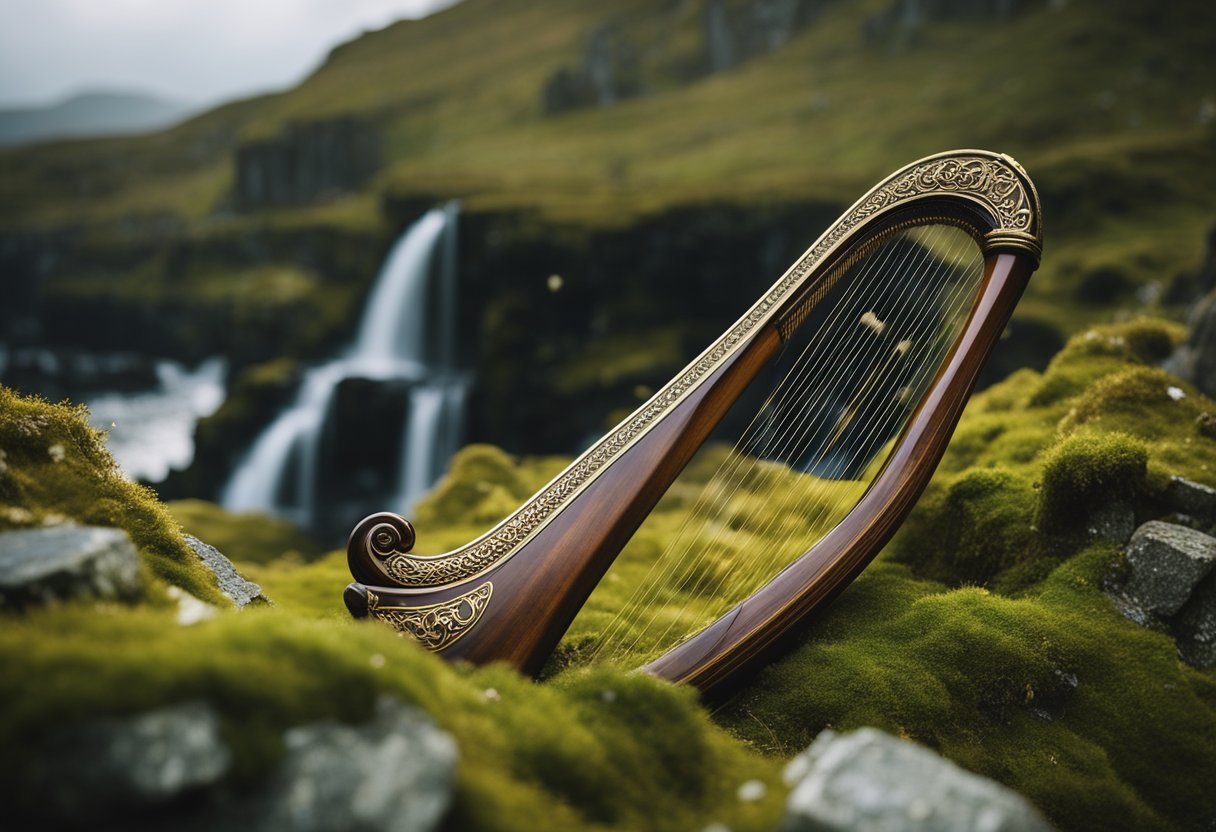
In Irish literature, the tapestry of cultural elements is intricately woven with social values that define the nation’s character. We find that traditions such as storytelling are not just forms of entertainment but also a means of imparting wisdom and values through generations.
- Traditions: Irish lore often centres on pivotal societal values—courage, honesty, and community spirit. These narratives, told through family bonds, showcase loyalty to kin and clan.
- Wisdom: The proverbs and sayings in these stories emphasise the importance of resilience and wit as life-enhancing virtues.
Irish folklore is replete with characters exemplifying these traits, from heroic figures who personify bravery to cunning folk who use their wits to overcome obstacles. These cultural narratives foster a sense of shared identity among the Irish, cementing family bonds and communal ties.
The mythical tales often depict fierce loyalty, be it Cú Chulainn’s allegiance to Ulster or the unwavering devotion of the Children of Lir. Even in the face of enchantment, the transformed swans maintain their sibling connection, illustrating the resilience of family bonds.
In the context of Irish literature, these myths and legends are not mere escapism but reflect society’s sacred values. The familial loyalties, communal resilience, and the wisdom passed through tales, guide everyday decision-making and value judgments within Ireland, shaping the country’s literature and the essence of its people.
Supernatural Elements and Mythical Beings
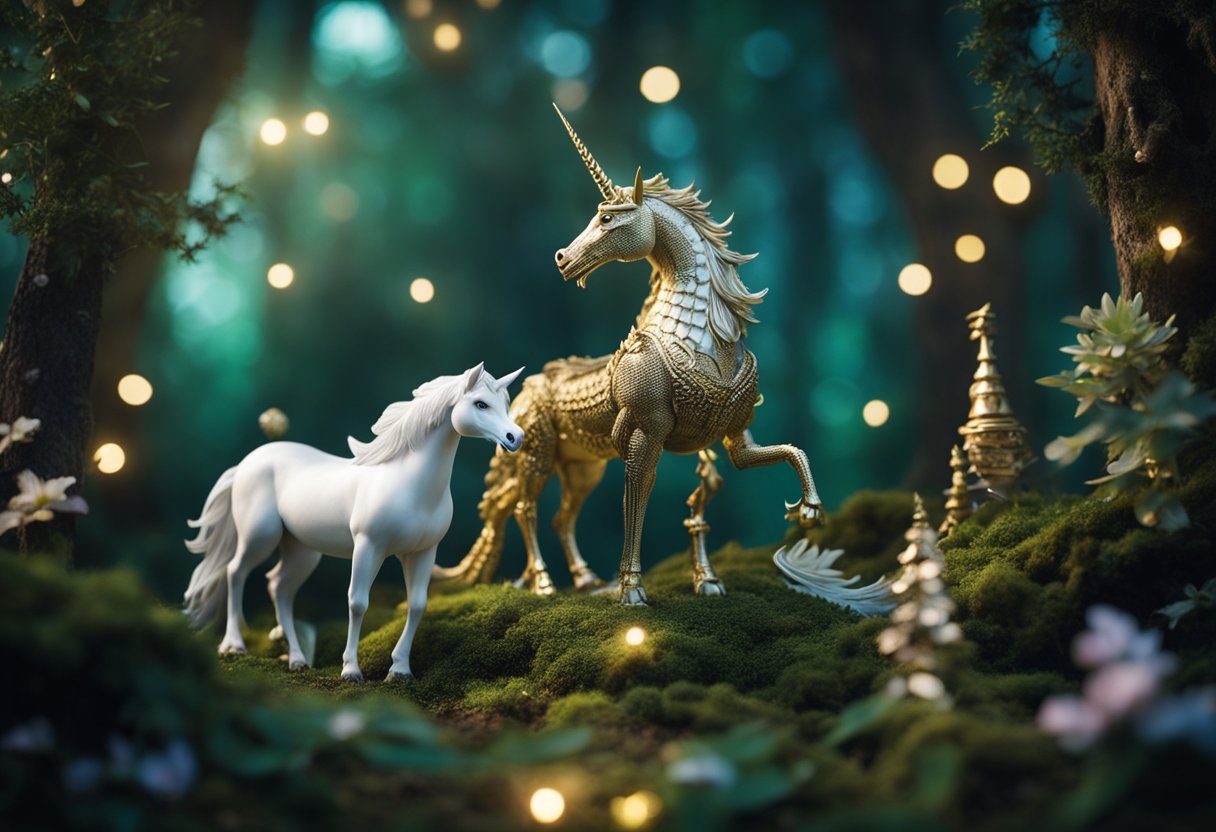
In the rich tapestry of Irish literature, our encounters with the supernatural are frequent and vivid. Steeped in a literary tradition that dates back centuries, Irish folklore brims with tales of mythical creatures and supernatural beings which still capture the imagination. Readers are often spellbound by the antics of fairies and the mischief of leprechauns, elemental representatives of the natural world and its hidden dimensions.
With her haunting presence, the banshee warns of impending doom with a mournful wail, a sound deeply etched into the cultural memory. Selkies, those poignant shapeshifters of lore, navigate the liminal space between seal and human form, their stories often reflecting on human relationships and longing.
Bold Fomorians, ancient and evil beings described in texts, challenge heroes’ moral and physical boundaries, further entwining myth with the human struggle. In highlighting these beings, we embrace a literary heritage that pulses with mythological elements, revealing layers of meaning and cultural insight.
The following table enlists some of these beings:
| Entity | Role in Folklore |
|---|---|
| Fairies | Protectors and tricksters of the natural world |
| Leprechauns | Mischievous cobblers, guardians of treasures |
| Banshee | Harbingers of death |
| Selkies | Shapeshifters, trapped between worlds |
| Fomorians | Antagonists of ancient Ireland, representatives of chaos and wild nature |
These narratives enrich our understanding of the past, inviting us to explore a world where the fantastic and real merge. We must carry and share these stories, ensuring that the whispers of old, filled with wisdom and warning, are not lost to the mists of time.
Mythical Landscapes and Sacred Spaces
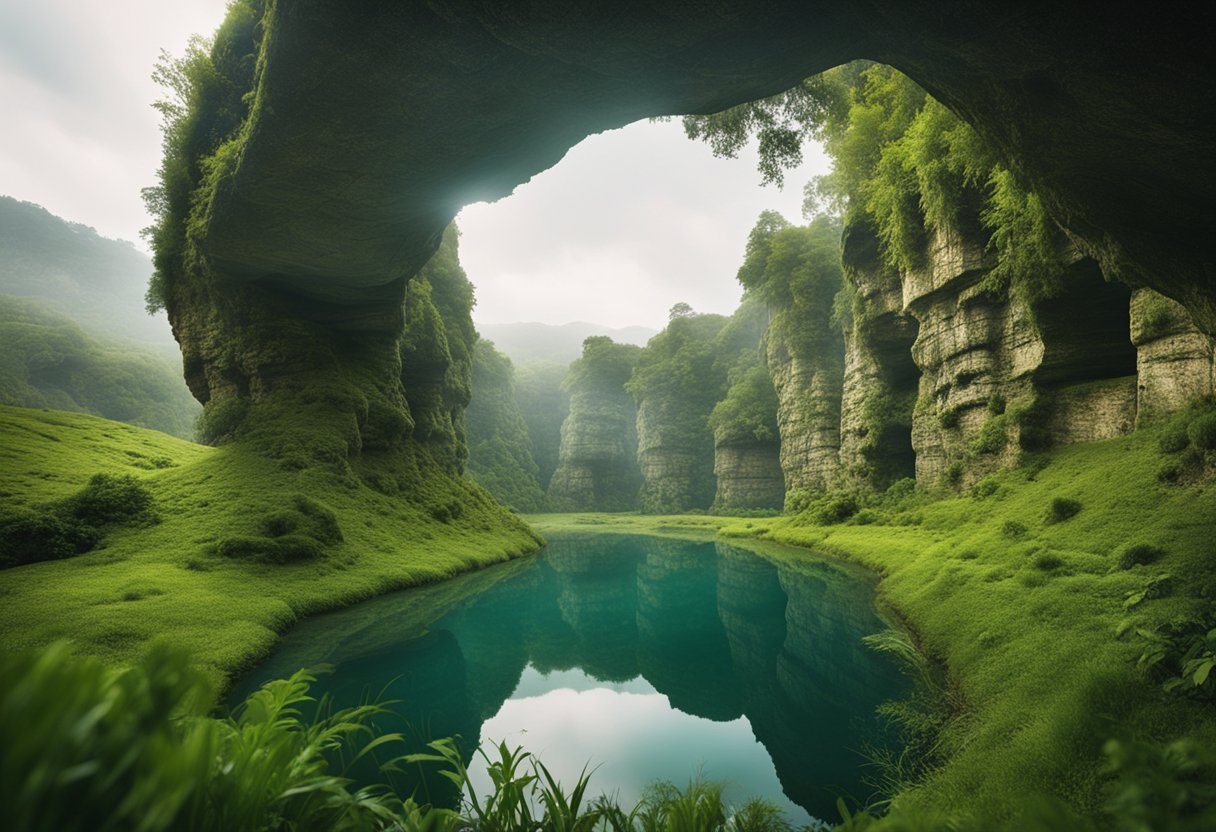
In exploring the manifold of Irish folklore, we find that our literature is replete with transcendent realms and hallowed terrains that blend the supernatural with reality. Among these, Tír na nÓg stands out as the most eminent land of eternal youth and beauty, where time ceases to lapse, and nature is forever in bloom.
Irish myth weaves through the very fabric of our homeland, with each lake, forest, and mound shrouded in spiritual significance. These landscapes are not just passive backdrops; they actively shape narratives, with many locations recognised as sacred spaces where the veil between worlds is wafer-thin.
- Nature in these tales is often conscious, harbouring spirits and otherworldly creatures, a testament to our ancestors’ reverence for the land and its mystical qualities.
- Lakes are particularly significant, serving as gateways to other realms or as the abode of divine entities.
Our literature offers clear mirrors reflecting our profound spirituality and connection to the landscape, suggesting that the physical and metaphysical are intertwined. Monuments and natural features underline the importance of place, each with its lore passed down through generations.
Through the stories encoded within our manuscripts, one discerns an intimate relationship with the land, safeguarding political history and the sacredness of our nature and its inextricable role in the Irish identity. These texts attest to a deep-rooted belief that a powerful, spiritual accord tied us to the very soil of our homeland.
From Folktales to Modern Interpretations

Folktales have long been the bedrock of Irish literature, steeped in wisdom and moral lessons that have transcended generations. We often find that traditional tales like ‘The Children of Lir’ not only entertain but also encapsulate the core values of our cultural identity. These stories are interwoven with the Irish language, showcasing the nation’s rich tapestry of storytelling.
The leap from oral narratives to literary masterpieces has seen folktales manifest in manuscripts that are preserved and re-envisioned through modern lenses. Our cultural evolution has tasked contemporary writers with anchoring folklore in today’s context, leading to new interpretations that resonate with modern audiences while honouring ancestral knowledge.
In this transformation, vital elements such as storytelling methods have evolved. However, the essence of these narratives remains untainted, ensuring that each retelling—whether found in a dictionary of Celtic mythology or a pocket dictionary of Irish myth and legend—carries the soul of the original myth.
While exploring Wikipedia or other repositories, it is evident how these folktales act as emissaries of our cultural past, delivering a narrative and an experience etched into the collective memory. Such stories contribute to a shared understanding, bridging the gap between the past and the present, whilst underscoring the universal nature of folklore and its capacity to shape contemporary Irish literature.
Our dedication to preserving these tales speaks volumes about the enduring nature of Ireland’s folklore and its pivotal role in shaping our cultural consciousness. Through manuscripts and modern recreations, we ensure that the wisdom of bygone eras continues enlightening and guiding future generations.
Frequently Asked Questions
In this section, we explore common curiosities regarding the intertwining of folklore and literature within Irish culture, specifically how mythological entities, epic tales, and ancient manuscripts contribute to our understanding of Ireland’s storied past.
Which mythical entities are most prevalent in Irish folklore?
Mythical entities such as the heroic warrior Cú Chulainn and the wise leader Fionn mac Cumhaill are significantly represented. These figures symbolise bravery and resilience, resonating deeply within the Irish cultural identity.
What is considered the greatest legendary tale from Ireland?
The Táin Bó Cúailnge (The Cattle Raid of Cooley) is often hailed as the greatest legendary tale from Ireland. This epic narrative centres around Cú Chulainn and is a quintessential example of Irish mythology’s richness.
What constitutes the oldest tale within the Irish mythological canon?
The oldest tales in the Irish mythological canon are found in the Mythological Cycle, which includes stories of ancient deities and the creation of Ireland. These tales are some of the earliest oral traditions that were later transcribed into manuscripts.
Could you outline the four major cycles that categorise Irish mythology?
Irish mythology is categorised into four major cycles: the Mythological Cycle, the Ulster Cycle, the Fenian Cycle, and the Historical Cycle. Each cycle encompasses a distinct set of stories and characters, reflecting Irish history and society.
Which creatures from Irish folklore are predominantly featured in literature?
Creatures such as leprechauns, banshees, and faeries are predominantly featured in Irish literature. They often represent the Otherworld, a realm of magic and mystery intrinsic to Irish storytelling.
How do Irish literary works incorporate elements of Celtic mythology?
Irish literary works weave elements of Celtic mythology through narratives that reflect the trials and triumphs of heroes, the moral codes of ancient society, and the spiritual connection to the land. These elements can be seen in how folklore is used to express cultural identity and history.




